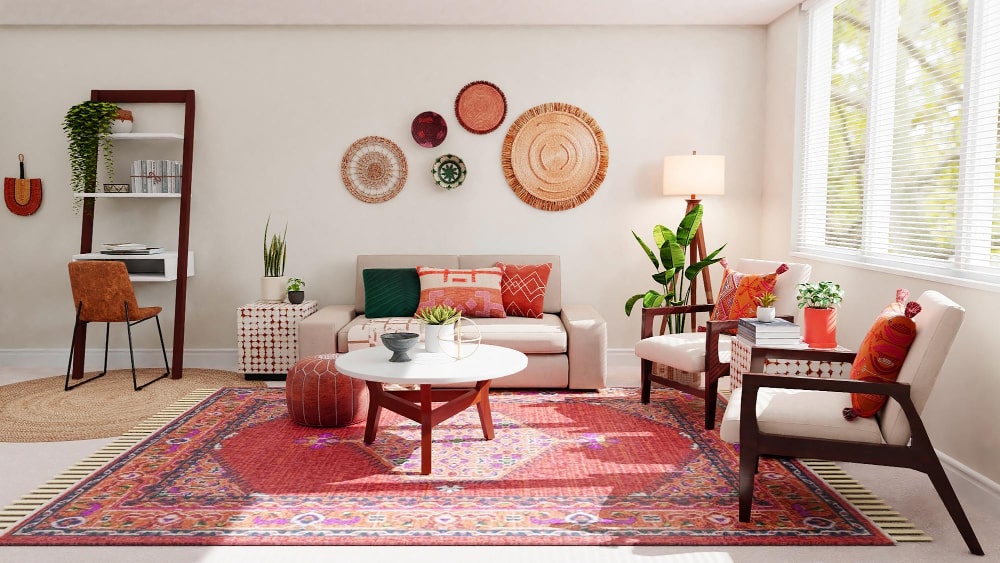Transform your space with expert miami interior design tailored to your style and needs.
Transform your space with expert miami interior design tailored to your style and needs.
Blog Article
Change Your Home With Important Principles of Interior Layout and Visual Appeals
By recognizing the influence of shade concept and the importance of texture and patterns, one can develop rooms that are not just visually attractive but also deeply individual. Accomplishing this equilibrium entails more than plain decoration; it incorporates a tactical arrangement and an eager understanding of just how each element connects within an area.
Comprehending Shade Concept
Color theory is a fundamental element of interior style that dramatically affects mood, assumption, and overall aesthetic. Understanding the principles of shade theory enables developers to create rooms that reverberate emotionally with occupants while satisfying useful demands (Architecture Firm). Shades can be classified into 3 main kinds: primary, additional, and tertiary. Each category plays a vital function in developing consistency within a room.
The emotional effect of shades is profound; cozy hues such as reds and oranges stimulate power and heat, while cool tones like blues and eco-friendlies promote peace and harmony. In addition, using corresponding shades improves visual passion, creating striking contrasts that can raise a space's charm.
Neutral colors, on the various other hand, function as a versatile backdrop, permitting other design aspects to shine. It is important to take into consideration factors such as lighting and the area's objective when choosing a color scheme, as these can change the perception of shades throughout the day.
Eventually, a well-considered shade scheme can change an area, promoting a sense of convenience and style that straightens with the inhabitants' preferences. Proficiency of shade theory is, for that reason, a crucial skill for any kind of indoor developer aiming to create harmonious and welcoming atmospheres.
Accomplishing Equilibrium in Style
Exactly how can designers accomplish a feeling of equilibrium in their spaces? Attaining balance in style is fundamental to producing unified interiors.
Asymmetrical balance, on the various other hand, depends on varying aspects that still achieve a cohesive appearance. This method enables more vibrant and informal arrangements, providing interest while keeping balance. By thoroughly picking varying sizes, colors, and textures, designers can develop a visually engaging space that feels balanced yet energised.
Radial equilibrium stresses a central focal point with elements emitting external. This style is generally seen in round designs, where furnishings and decor produce a cohesive surround that attracts the eye internal.
Ultimately, attaining balance needs thoughtful consideration of scale, proportion, and the partnerships between components. luxury interior design. By masterfully using these balance concepts, developers can change rooms into environments that really feel both aesthetically pleasing and functionally unified, enhancing the total experience for occupants
Significance of Spatial Understanding

A keen sense of spatial understanding allows developers to identify centerpieces within a space, guiding the visitor's attention web to key functions while preserving a total feeling of unity. It also assists in the tactical positioning of illumination, which can drastically affect the assumption of room and state of mind. Additionally, recognizing spatial relationships enables the developer to deal with the details requirements of inhabitants, ensuring that each location serves its intended objective without jeopardizing aesthetics.
Eventually, spatial awareness is critical for making the most of the potential of any kind of interior space. By carefully thinking about the interplay between dimensions, design, and function, designers can develop atmospheres that not just meet functional demands however also evoke a sense of convenience and appeal, enhancing the overall living experience.
Including Texture and Patterns
Accepting a varied variety of textures and patterns can dramatically improve the visual and tactile appeal of an interior room. The critical use numerous products-- such as timber, metal, fabric, and rock-- develops deepness and interest, making a room feel extra inviting and vibrant. Incorporating smooth surface areas with rough appearances can establish a balance that attracts the eye and involves the detects.
When incorporating patterns, take into consideration both range and repetition. Huge patterns can work as focal points, while smaller sized, subtle designs can enhance other aspects without overwhelming the space. Layering patterns, such as pairing flower cushions with candy striped tosses, includes complexity and a sense of consistency if performed attentively.
It is additionally critical to maintain a natural color combination, guaranteeing that appearances and patterns interact instead of complete for focus. By selecting a few crucial appearances and patterns, you can create a combined aesthetic that reflects your individual design while improving the general atmosphere of the area. Inevitably, the cautious consolidation of these aspects can change an ordinary area right into a sophisticated atmosphere abundant with personality and warmth.
Customizing Your Room
Creating an area that mirrors your character is crucial to attaining a truly welcoming setting. Personalization in interior decoration Read More Here permits you to instill your distinct design and interests right into your home, transforming it from a mere shelter into a haven that speaks with that you are. Begin by choosing a color combination that reverberates with your feelings-- bold colors can stimulate, while soft tones offer peace.
Incorporate art work and design that reflect your interests, whether it be traveling, nature, or abstract principles. Showing individual collections, such as books, pictures, or keepsakes, can stimulate treasured memories and produce prime focus within an area. Additionally, think about personalizing useful pieces, like upholstered furniture, to straighten with your aesthetic choices.

Final Thought
Finally, the transformation of a home through the important concepts of interior decoration and looks necessitates a detailed understanding of color theory, balance, spatial understanding, appearance, and personalization. Each element adds substantially to creating an unified and practical living setting - interior design firms. By thoughtfully integrating these concepts, people can enhance the visual charm and psychological vibration of their spaces, eventually promoting a home that shows special identities while offering comfort and functionality
Report this page